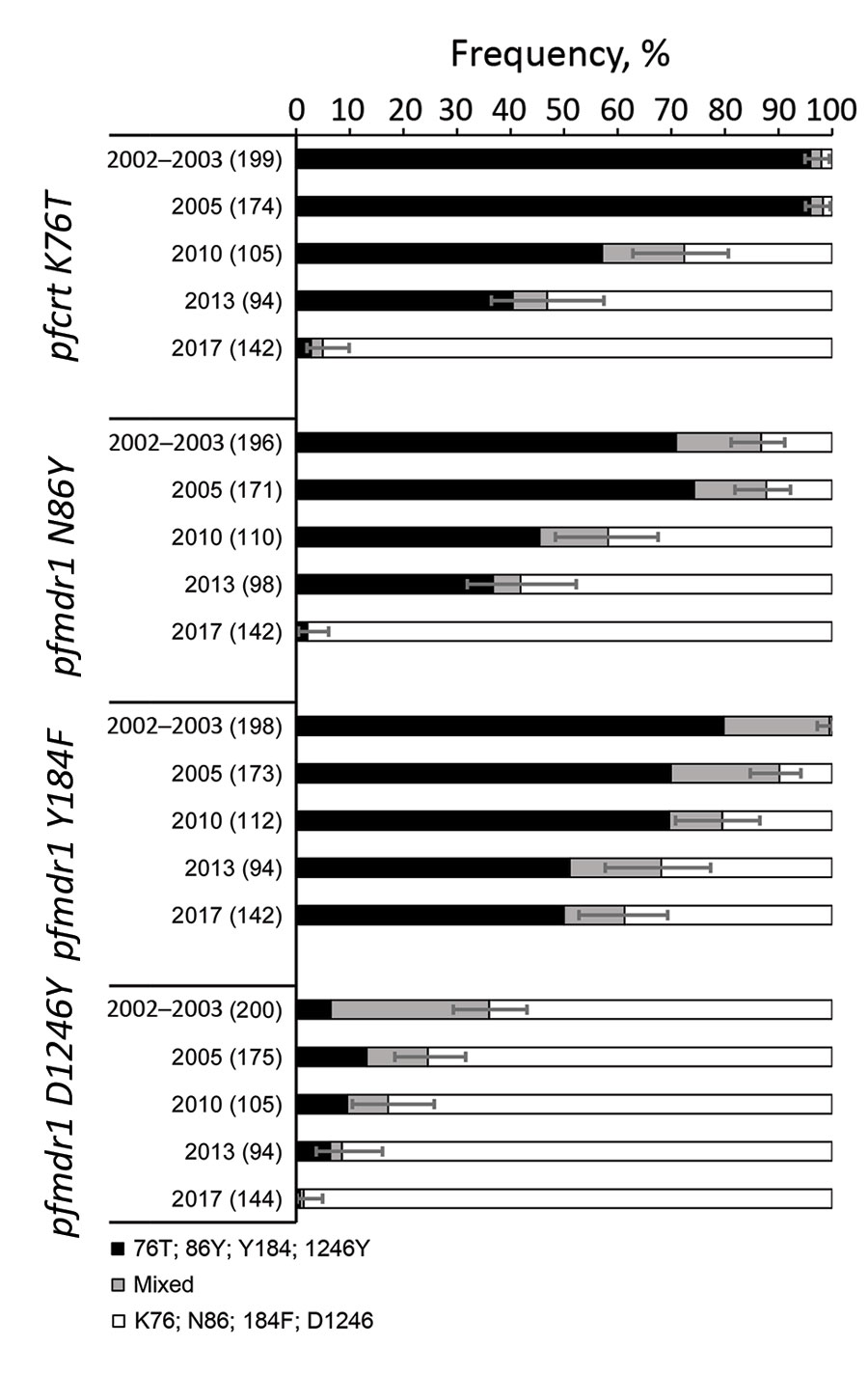Volume 26, Number 8—August 2020
Research
Increased Sensitivity of Plasmodium falciparum to Artesunate/Amodiaquine Despite 14 Years as First-Line Malaria Treatment, Zanzibar
Figure 3

Figure 3. Frequency of polymorphisms associated with amodiaquine resistance in Plasmodium falciparum infections in Zanzibar, 2002–2017. Black bars indicate resistance alleles, gray bars indicate mixed infections, and white bars indicate wild-type alleles. Error bars indicate 95% CIs of proportions of infections harboring resistance alleles (either alone or mixed infections). Values in parentheses are the total number of genotyped samples shown next to the study year. Trend analysis: p<0.001 for pfcrt 76T + mixed, pfmdr1 86Y + mixed, pfmdr1 Y184 + mixed, pfmdr1 1246Y + mixed; p<0.001 for pfcrt 76T, pfmdr1 86Y, pfmdr1 Y184Y; and p = 0.016 for pfmdr1 1246Y. Pfcrt, P. falciparum chloroquine-resistance transporter gene; Pfmdr1, P. falciparum multidrug-resistance gene.